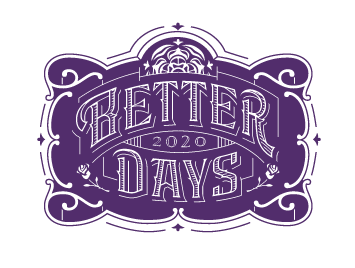Meet Seraph Young, Utah’s First Female Voter
By Katherine Kitterman
Better Days 2020 Historical Director
This year, Election Day falls on the birthday of Seraph Young, the first woman in the modern nation to cast a ballot! Seraph was an everyday woman who made history by doing something quite ordinary. When the twenty-three year old cast her ballot in Salt Lake’s city election on February 14, 1870, she became the first female voter both in Utah and in the modern United States. The Utah territorial legislature had granted women the right to vote just two days earlier, and Seraph was obviously eager to have a voice in government. She didn’t go on to give speeches or run for public office, but Seraph’s historic vote paved the way for what has now been 140 years in which Utah women have cast ballots.[i]
Salt Lake City’s City Hall, also known as Council Hall, c. 1870. Photo courtesy of the Utah State Historical Society.
Seraph Cedenia Young was born in Winter Quarters, Nebraska on November 6, 1846 to Cedenia Clark and Brigham Hamilton Young, who were on their way west to the Great Basin along with other Mormon refugees. The Young family arrived in Utah with a pioneer company in October 1847.[ii] As the oldest of nine children, Seraph probably spent much of her childhood helping with household work and caring for her younger siblings. She was known as “a beautiful, refined and cultured young woman.”[iii] She was likely also a good student, because at the time of her historic vote in 1870, Seraph was a teacher at the University of Deseret’s model school, a primary school with two grades of young pupils.[iv] Whether or not she intended to be the first of the day’s 25 female voters, it makes sense that this professional woman with a long workday ahead of her would show up to the polls early, navigating her way past stump speeches and a local brass band to cast her vote in City Hall.[v] Seraph’s vote made local and national news, but it soon faded from public memory.[vi] Her life went on, quietly.
Two years later, on February 11, 1872, Seraph married a printer named Seth Leland Ford, a New Yorker who had fought for the Union army during the Civil War. Seraph and Seth had three children while living in Utah; Fred died as a toddler in 1874, but daughters Grace and Cherry survived. The Fords moved to New York in the late 1870s, perhaps to be near Seth’s family as he suffered from major health challenges due to the effects of his wartime service. Seth began receiving a pension for veteran invalids due to “blindness and spinal disease,” and he temporarily lived in a home for disabled veterans from 1882 to 1884.[vii]
Somehow, Seraph found a way to care for her blind and paralyzed husband for nearly three decades while managing a household on his small pension. One newspaper reported that “her unselfish devotion is well known by all her friends.”[viii] The Fords eventually moved to Baltimore Maryland, and later Montgomery County, Maryland, just outside Washington, D.C., to be near their two adult daughters. Seraph’s devotion to family even extended to adopting her ten-year-old granddaughter, Helen Lawrence, after her daughter Grace divorced and remarried.[ix]
Seraph Young Ford, c. 1916. Photo courtesy of the Utah State Historical Society.
Seraph was never able to return to Utah because of her husband’s need for constant care, but she reconnected with friends and family from home whenever they visited the nation’s capital. When Emmeline Wells and Zina Young Williams (Seraph’s cousin) came to speak at their first national suffrage convention in 1879, Seraph visited the two women at their hotel. Years later, Emmeline noted in her diary that Seraph had accompanied her to meet with officials from the National Council of Women during their 1895 convention. Although the circumstances of Seraph’s life didn’t allow for much public engagement, she still clearly retained her interest in political affairs.
Like many women, Seraph’s financial struggles worsened after her husband passed away in 1910. She had previously sold off land to make ends meet, so she lived in a rented house with her daughter at the end of her life. After her death on June 22, 1938, Seraph was buried next to her husband in Arlington National Cemetery. Perhaps someday women will place their “I Voted” stickers on Seraph’s gravestone to honor this woman who lived an ordinary life and still made history.
Learn more about why Utah women were the first to vote in our recent blog post and on our educational website at www.utahwomenshistory.org. For more information on Seraph, check out our biography here and another recent article here.
Seth L. Ford and Seraph Y. Ford’s gravestone at Arlington National Cemetery. Don’t worry, we’re working to correct the spelling of her name.
[i] Utah women were briefly disfranchised by federal legislation from 1887 to 1895, but they regained their voting rights with statehood in 1896. Read that story here.
[ii] Mormon PIoneer Overland Travel Database.
[iii] “Suffrage Won by Mothers,” Relief Society Magazine, Vol. 7 no. 5 (May 1920): 264.
[iv] “Second Annual Catalogue of the Officers and Students in the University of Deseret, for the Academical Year 1869-70,” Salt Lake City, 1870. Special Collections, J. Willard Marriott Library, The University of Utah.
[v] “The Election,” Deseret Evening News, February 14, 1870.
[vi] “The Election in Salt Lake City,” The Evening Star (Washington, D.C.), February 23, 1870. National newspapers incorrectly reported both the number of female voters as well as Seraph’s relationship to Brigham Young; she was his grand-niece, not his granddaughter.
[vii] General Register of Inmates Admitted to The New York State Soldiers’ and Sailors’ Home, National Archives, Historical Register of National Homes for Disabled Volunteer Soldiers, 1866-1938; Available at Ancestry.com.
[viii] “Salt Lakers in Gotham,” Deseret Evening News, March 15, 1902.
[ix] “Would Adopt Child,” Washington Times, December 23, 1904.



